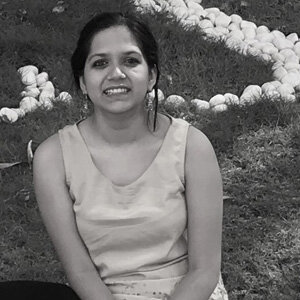
Hrishika Jain
The Centre, at the peak of the pandemic in May last year, set up the Committee for Reforms in Criminal Laws for recommending wide-ranging reforms cutting across substantive, procedural, and evidentiary criminal law. The Committee professes to be guided by the objectives of ensuring “the safety and security of the individual, the community and the nation” and by “the constitutional values of justice, dignity and the inherent worth of the individual”. The formation of the Committee has been ridden with controversy, courting criticisms from a broad base of stakeholders in the criminal justice system. Concerns have ranged from the evident disregard for diversity in its composition, to the opacity in its functioning and terms of reference, the rushed timelines, and even the academic integrity of its individual members. There has, however, been scant public engagement with the substance of the ‘questionnaires’ themselves – an engagement made all the more imperative due to the lack of clarity on the Committee’s agenda and the extent of governmental influence on its final report.
This is particularly true given the sheer breadth of the questions the Committee is mandated with resolving – from the granular to the most abstract principles affecting the very foundations of criminal law and the relationship between the state and the individual. The questionable wisdom of a scope this expansive for any single body aside, the very real possibility that the next tranche of criminal law reforms of this enormity will be the product of a broken process has to be engaged with.
I seek to make initial steps towards this engagement, while continuing to endorse the principled objections against the Committee itself that have led the criminal justice community to seek its disbandment.
Of concern to me in this post is one of the Committee’s proposals for amending Section 10 of the Indian Evidence Act, 1872 (‘IEA’). The Section currently reads as follows:
“10. Things said or done by conspirator in reference to common design.—Where there is reasonable ground to believe that two or more persons have conspired together to commit an offence or an actionable wrong, anything said, done or written by any one of such persons in reference to their common intention, after the time when such intention was first entertained by any one of them, is a relevant fact as against each of the persons believed to be so conspiring, as well for the purpose of proving the existence of the conspiracy as for the purpose of showing that any such person was a party to it.” [emphasis mine]
Section 10 – by allowing acts (and I use ‘acts’ to include statements) of an accused to be held relevant against a co-accused and alleged co-conspirator, in both proving the latter’s involvement in the conspiracy and the conspiracy itself – presents a rather unique logical conundrum. Commonly referred to as the problem of ‘bootstrapping’, the use of Section 10 poses a simple problem – how can a conspiracy and one’s role in it be proved by first assuming the truth of the existence of such conspiracy and one’s role in it? Once it becomes clear that Section 10 carves out a potentially circuitous rule of relevance, it is easy to see the massive potential for its abuse – enabling the prosecution to prove omnibus charges against a bunch of unconnected defendants by, figuratively, pulling its case up by its own bootstraps.
As we shall see, resorting to the text and judicial interpretation of the provision answers some questions while posing many others – a fact that has been put to much use by authoritarian wielders of penal power. Most recently, from the Delhi Riots cases to the ‘toolkit’ allegations on Disha Ravi to Aryan Khan’s arrest for ‘conscious possession’ of drugs – have been informed by a moral panic around ‘larger conspiracies’ legally backed up by long series of charges tied together by the tenuous thread of conspiracy in law.
Thus, the need for an amendment is more than evident, and the Committee has tried to meet this need with the following proposals:
- “replace the phrase ‘where there is a reasonable ground to believe’ with the phrase ‘where the question is whether two or more persons have…’?” [Proposal-I]
- “replace the phrase ‘in reference to’ with ‘in furtherance of’ in order to clarify its scope” [Proposal-II]
In this blog post, I am only concerned with Proposal I and its implications for both policy and the internal logical coherence of Section 10. Understanding and assessing it requires context into how the issue of bootstrapping – and the resultant potential for abuse – has been heretofore addressed in India and other jurisdictions.
In the next section, I will look at the way courts in US and UK have addressed this issue and compare that to the practice in India. In the last section, I will propose alternative amendments that in my view would provide stronger safeguards against potential misuse of Section 10.
Proposal I: Pull Yourself Up by Bootstraps? Go ahead, Try it
As in economic policy, so in logical reasoning – pulling oneself up by one’s bootstraps simply does not work.
Different jurisdictions have responded to this logical fallacy inherent in Section 10 (and corresponding provisions) in different ways. The position in the UK on the admissibility against an accused person of evidence of her co-conspirators’ acts is well settled. In response to the logical problem of bootstrapping, a string of decisions from R v. Blake [(1844) 6 Q. B. 126] to R v. Devonport [[1996] 1 Cr App R 221] have held that a co-conspirator’s act can be made relevant against an accused only when there was some independent evidence otherthan the act sought to be made relevant in this manner that goes towards proving a conspiracy and their membership therein. This independent evidence is called evidence aliunde, and if strictly adhered to, quite elegantly resolves the logical quandary of Section 10.
Naturally, questions arise of the standard of proof to which independent evidence must establish the preliminary facts before the rule kicks in. Regardless of the answer to this further question (I shall take it up in my concluding section), evidence aliunde remains an integral part of the solution to this problem.
US Courts had found a similar solution – referring to it, quite literally, as the ‘bootstrapping rule’. The decisions in Glasser v. US and US v. Nixon held that the preliminary facts that ought to be proved before the Court can admit evidence of certain acts of a co-conspirator against an accused must be established solely by evidence aliunde. However, this position has seen a reversal since the decision in Bourjaily v. US (1987). The Court relied on Section 104(a) of the newly enacted Federal Rules of Evidence (‘FRE’), which stipulates that the Court is not bound by any rules of evidence while deciding the preliminary question of whether certain evidence is admissible. Therefore, the Court said, evidence sought to be admitted through Rule 801(d)(2)(E) (provision corresponding to Section 10) can also be used to determine the preliminary facts to establish applicability of the said Rule of admissibility in the first place. The decisions in Glasser and Nixon were dismissed as pre-dating FRE, and therefore, not governing the field in light of the subsequent enactment.
The Indian legislative answer to this is neither here nor there. The phrase ‘reasonable ground to believe’ in Section 10 clearly requires some proof of the preliminary facts of a conspiracy and their membership in it, before allowing the prosecution to benefit from the very wide powers Section 10 confers on it. In that, it mirrors the position in both the US and UK – but the similarity ends there. Unlike both the above jurisdictions which have expressly clarified the question of bootstrapping (by either resolving it or just embracing the logical flaw), Section 10 remains silent, leaving much to judicial interpretation.
While Indian courts have expressly interpreted ‘reasonable ground to believe’ to mean that the State must prima facie prove existence of conspiracy, whether such proof needs to be through evidence aliunde is a different question. Normally, one would assume that this is logically inferrable – since the condition that triggers the application of the provision cannot also be what the provision is meant to prove once it is triggered. And this has indeed been the position taken in Dharambir Khattar (2009)and LK Advani (1997).
However, in the absence of textual clarity in the provision itself, this position may not be consistently followed.
As an illustration, in Damu v. State of Maharashtra, the Court held that the requirement of ‘reasonable grounds to believe’ was satisfied by A-4’s confession – and hence, allowed the use of Section 10 to make the very same confession relevant against A-1 and A-3, the other accused persons it implicated in the conspiracy (see para45, (2000) 6 SCC 269). Now, of course, the decision in Navjot Sandhu overruled Damu on the point that confessions made after arrest are covered within the scope of acts done ‘in reference to their common intention’. However, it took no issue with the way ‘reasonable grounds to believe’ was established in the absence of evidence aliunde. Damu is a particularly stellar study in the wide sweep of Section 10 and the way a charge of conspiracy artificially expands prosecutorial powers to bring substantive evidence towards facts that would otherwise be either irrelevant or only corroborative in nature. In Damu, Section 30 of the IEA was naturally the more directly applicable provision, being specifically concerned with confessions of a co-accused. However, Section 30 only allows the Court to ‘consider’ such confessions by a co-accused, and has been understood to ascribe to it only weak, barely corroborative value, to be used only to ‘receive assurance’ on a conclusion of guilt reached through other evidence. The Court in Damu, for this very stated reason, instead relied on the circuitous door to relevance provided under Section 10 – allowing itself to bypass the cautious approach of Section 30 and utilise Section 10 to make the same thing substantive evidence against the co-accused. (see paras 42-45). And without the requirement of evidence aliunde, this elevation of the co-accused’s act to substantive evidence could be achieved by simply, so to speak, pulling it up with its own bootstraps.
While Damu illustrates the inevitable problems that are bound to come with lack of textual clarity, the introduction of the Committee’s proposal into the mix only makes the landscape messier. If the words ‘reasonable grounds to believe’ are replaced with ‘where the question is whether two or more persons have…’, even the formal requirement for some proof (aliunde or otherwise) of preliminary facts before triggering the application of Section 10 will be abolished. Deviating from even the US position, Indian prosecutors would be able to make relevant against everyone merely charged with a conspiracy, anything said or done by any one of them in reference to their common intention – and treat it as substantive evidence of any of their membership in the conspiracy and the conspiracy itself.
This defies not just the rules of formal logic, but also the fundamental tenets of criminal law. This is because it allows the State to incriminate someone for conspiracy (often along with a series of serious substantive charges) using the acts or statements of another without being required to prove, to any standard of proof, using any kind of evidence (aliunde or not), a relationship of agency or even any association between them.
Notes for an Alternative Amendment
The need for an amendment is rather clear – the text of Section 10, as it stands, does not seem to shed any light on the question of evidence aliunde. As I have argued before, a requirement for evidence aliunde establishing the preliminary facts before Section 10 can be applied at all is an integral part of the path forward.
However, there is a need for the text to not just expound on the kind of evidence that can be used to prove the preliminary facts before Section 10 can be applied, but also to expound on the standard to which the prosecution must prove these facts for Section 10 to get triggered. As of now, Section 10 does not give much of a clue – only stating that there must be ‘reasonable grounds to believe’.
Naturally, the standard of proof for triggering Section 10 would have to be lower than the one employed by courts for convicting someone of a conspiracy, i.e., ‘beyond reasonable doubt’. As a corollary, it would also have to be higher than what the Court would impose on the prosecution for merely framing a charge of conspiracy against the accused, i.e., the prima facie standard. This is not just to avoid the potential of abuse that comes from omnibus charges connected by the mere charge of conspiracy – but also flows logically from the sequence of proceedings. The relevance of facts is considered by the Court in a later stage in the trial, after the framing of charges. And so, if the standard of proof for triggering the rule of relevance under Section 10 is interpreted to be the same as at the time of framing charges, Section 10 will have to be interpreted to have no additional requirements at all before it is triggered, negating the safeguard that comes from the requirement of evidence aliunde.
Unfortunately, this prima facie standard is what has been interpreted into ‘reasonable grounds to believe’ under Section 10. This is perhaps traceable in part to the fact that the phrase ‘reasonable grounds to believe’/‘reason to believe’ found elsewhere in the Code of Criminal Procedure has also been interpreted to mean a prima facie standard (see, for example, Section 437, CrPC and its interpretation), further highlighting the need for a textual amendment.
Keeping these concerns in mind, I propose the following amendment, with the additions underlined:
“10. Things said or done by conspirator in reference to common design.—Where the prosecution proves by way of evidence aliunde and to a preponderance of probabilities, that two or more persons have conspired together to commit an offence or an actionable wrong, anything said, done or written by any one of such persons in reference to their common intention, after the time when such intention was first entertained by any one of them, is a relevant fact as against each of the persons believed to be so conspiring, as well for the purpose of proving the existence of the conspiracy as for the purpose of showing that any such person was a party to it.”
The above Amendment would clarify two things – one, the kind of evidence that may be led to trigger the expansive reach of Section 10; two, the standard to which that kind of evidence must prove the existence of a conspiracy between the accused. The first clarification incorporating the requirement of evidence aliunde is crucial towards solving the bootstrapping issue. The additional requirement that such evidence prove the existence of a conspiracy to a preponderance of probabilities further strengthens the safeguard against bootstrapping. By providing for a standard higher than the prima facie one used for framing charges, it makes sure that the requirement of evidence aliunde does not become redundant.
Hrishika Jain is a Consultant (Research) at Project 39A, National Law University Delhi.





